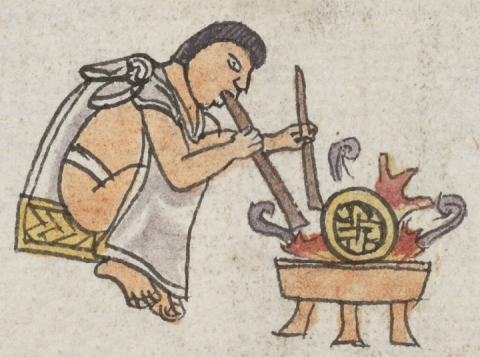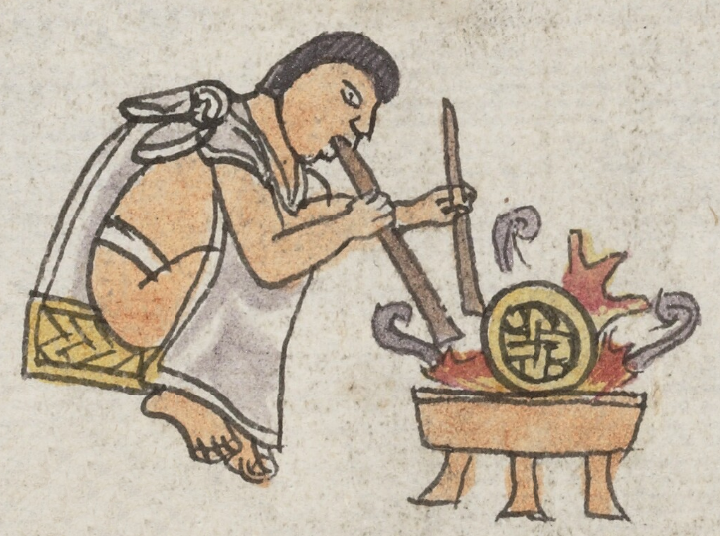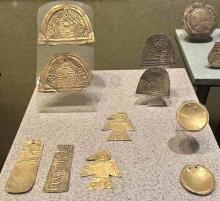teocuitlatl (Mdz70r)
This example of iconography is relevant here for making comparisons with glyphs for gold (teocuitlatl). One of these glyphs appears at the front edge of the bowl as a circle with a quincunx design and painted yellow. This disc is surrounded by red and yellow flames and curling dark smoke. The man making the gold is blowing air through a tube to make the fire hotter for melting the ore. The man wears a (probably white cotten) cape tied at his shoulder and a white loincloth. He sits on a woven reed seat, probably made of petlatl, also given a yellow color by the artist. The gold worker has a tan skin color and the bowl for smelting is a light terracotta, or the same color.
c. 1541, or by 1553 at the latest
oro, fundir, fuego, cerámicas, textiles, hombres, tecnología
These pieces of hammered gold come from Michoacan. The museum signage suggests that they were sewn onto clothing, usually hanging just from the top of the gold piece and having some mobility that way. Copper was more common in Michoacan, but goldworking was known and some techniques were apparently learned from Ecuador and Peru. Hammering gold was more common than melting it. Museo Nacional de Antropología e Historia, Sala 10. Photo by S. Wood, 30 April 2025.

teocuitla(tl), precious metal, gold, silver, https://nahuatl.wired-humanities.org/content/teocuitlatl
Codex Mendoza, folio 70 recto, https://digital.bodleian.ox.ac.uk/objects/2fea788e-2aa2-4f08-b6d9-648c00..., image 15 of 188.
Original manuscript is held by the Bodleian Libraries, University of Oxford, MS. Arch. Selden. A. 1; used here with the UK Creative Commons, “Attribution-NonCommercial-ShareAlike 3.0 License” (CC-BY-NC-SA 3.0)


